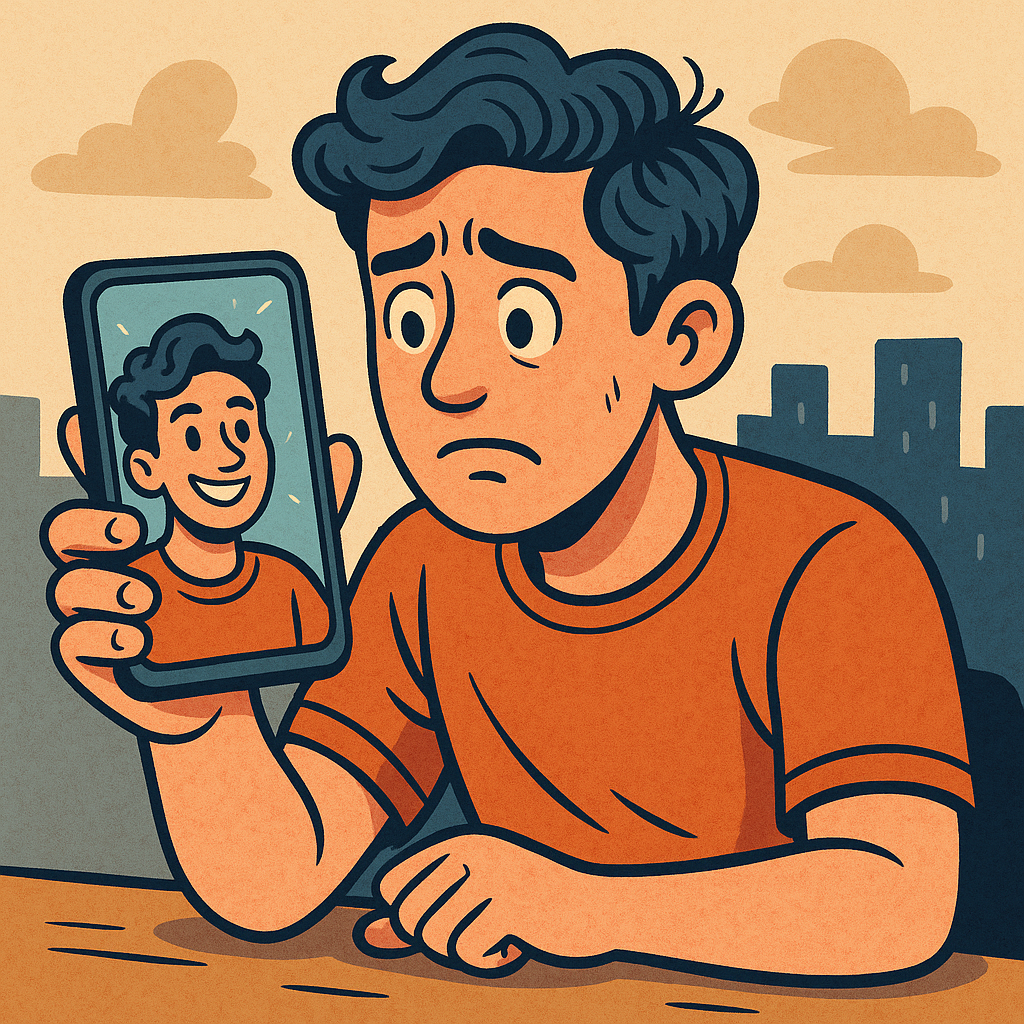Our perception is shaped more by pixels than by the world itself. New trends—like AI-generated deepfakes and hyper-personalized echo chambers—are warping how we interpret truth and identity on social media. Discover in this article the impact social media on your sense of reality
social media sense of reality disruption is real—and the stakes are higher than you realize.

Deepfakes: Reality That Isn’t {#deepfakes}
Deepfakes are AI‑generated audio or video clips that mimic real people with uncanny realism. Visual clarity has reached a point where deepfakes are increasingly used in scams, political disinformation, and identity theft—with fraud cases growing from a few per month to hundreds recently.
According to Wikipedia’s deepfake overview, these are powered using GANs and autoencoders that now produce almost indistinguishable fakes . Wired notes the booming threat: scammers impersonate voices and faces to extort victims, with fraud losses projected into the billions.
Yet, people often don’t notice fakes immediately. SagePub research shows that falling for even one deepfake shifts how we evaluate media credibility, undermining trust across platforms. Our neural wiring interprets compelling visuals as truth—making deepfakes a weapon against informed perception.
Why this matters
- Trust erosion: When we can’t tell real from fake, everything feels uncertain.
- Political instability: Fake clips can shake public opinion, even if only a few go viral.
- Emotional impact: Victims of deepfake scams suffer anxiety, paranoia, and isolation.
Maintaining social media sense of reality starts with recognizing that what “looks real” often isn’t.
Echo Chambers & Filter Bubbles {#echo-chambers}
Your next scroll may be curated not by chance – but by hidden algorithms. Echo chambers amplify only information that aligns with your existing beliefs and silence dissenting voices . Researchers refer to this as “neotribalism,” restricting reality to digital comfort zones.
Cultivation theory—long applied to TV—now extends to social media. Those immersed in curated content develop a skewed worldview: more news from your tribe, less diversity in thought .
This amplifies:
- Polarization: Reinforces beliefs and divides us further
- Anxiety/Pessimism: Frequent exposure to doom-laden content breeds a “mean-world” view
- Inauthentic identity: Fitting into tribes becomes more important than self-expression
It’s easy to lose touch with broader human experience when filtered feeds define reality.
Snapchat Dysmorphia: When Selfies Lie {#dysmorphia}
Social media doesn’t just distort external reality—it warps our self-image. Filters on Snapchat and Instagram enable flawless, edited versions of ourselves. But when we know only these enhanced versions, our real faces feel inadequate.
“Snapchat dysmorphia” describes this exact distortion—I want to look like my filtered photo. The phenomenon ties into rising body dysmorphic disorders and anxieties among teens and adults alike:
- 80% of young girls use beauty‑filter apps daily
- 60% report unhappiness when comparing unfiltered reality to edited images
Your social media sense of reality doesn’t just shift outward—it sneaks into how you feel about your own face and body.
Immersive VR & Blurred Realities {#vr}
The trend-setting frontier now being explored: virtual reality within social platforms. Recent research hints at a shift from two-dimensional feeds to immersive 3D environments .
These VR social spaces offer new experiences—but also blur the line between digital and real. Imagine “meeting” someone in VR and feeling genuine rapport—only to discover it was procedural code. As immersive tech advances, people may root stronger emotional bonds in virtual realms than in real ones. That evolving social media sense of reality requires new literacy in distinguishing digital presence from physical reality.
Safeguards: Staying Grounded in a Deceptive World {#safeguards}
Here are practical steps to recalibrate your sense of reality:
1. Question everything
- Fact-check videos and images before sharing.
- Inspect audio/video metadata using tools aimed at detecting deepfakes.
- Beware trust in single-source or tribal feeds.
2. Diversify your feed
- Follow a range of voices and perspectives.
- Use platform features like Twitter’s “Topics” or Facebook news preferences to balance content—less echo, more context.
3. Digital hygiene rituals
- Toggle between “Inspiration” and “Reality” modes inspired by recent design guides: filter out over-curated content daily.
- Limit time on image-heavy platforms without critical awareness.
4. Reconnect offline
- Regularly unplug and engage in real-world interactions—nature, face-to-face conversations, analog hobbies.
In Summary
Social media isn’t just changing how we communicate—it’s reprogramming our experience of truth, beauty, identity, and trust. Today’s rising trends in deepfake tech, echo chamber algorithms, and VR immersion threaten to rewrite the rules of reality itself.
But there is hope—and power—in being alert. When you recognize the distortions, diversify your input, and ground yourself offline, you keep control over your own social media sense of reality.
References
- Wang, Q., & Culture & Cognition Lab. (2024). Online versus reality: Social media influences perceptions. Cornell University. Retrieved from https://www.sciencedaily.com/releases/2024/01/240117143642.htm
- Najar, M. A., & Shabir, Q. A. (2022). Social Media and Reality: Are social media profiles a true representation of people’s lives? ResearchGate. Retrieved from https://www.researchgate.net/publication/373166041_Social_Media_and_Reality_Are_social_media_profiles_a_true_representation_of_people%27s_lives
- “A Virtual Life: How Social Media Changes Our Perceptions.” (n.d.). The Chicago School. Retrieved from https://www.thechicagoschool.edu/insight/from-the-magazine/a-virtual-life/






